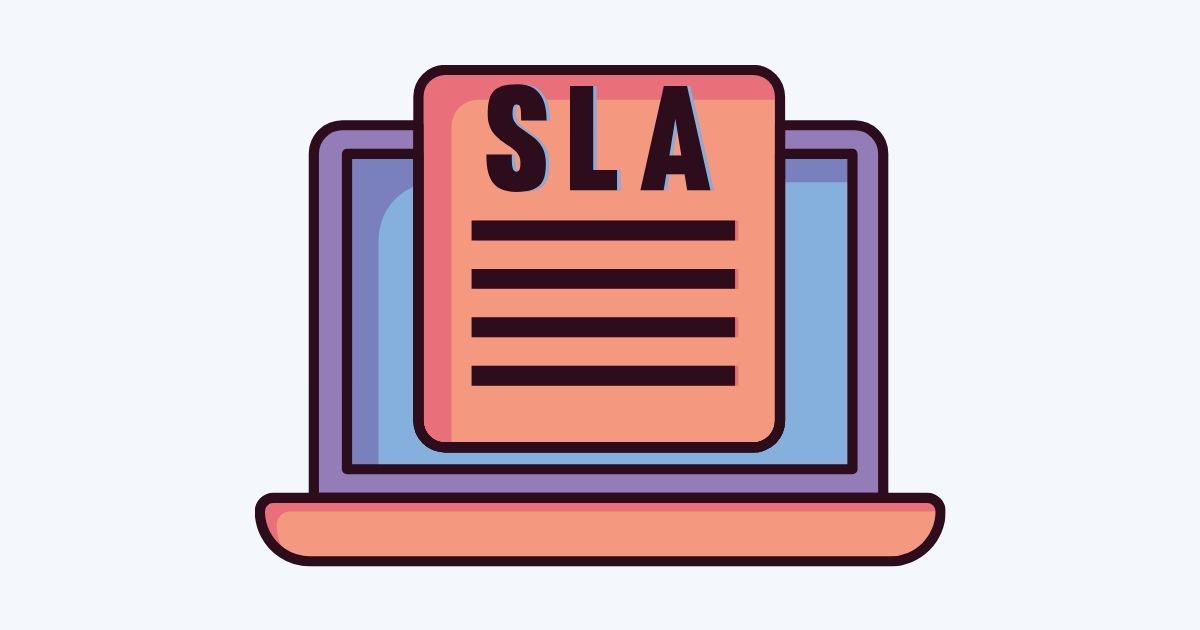For contact centers, tracking the right metrics is a strategic necessity.
In 2024, understanding the significance of these metrics is paramount.
They aren’t just data points; they serve as the guide for your contact center toward operational efficiency and heightened customer satisfaction.
Let’s explore strategic metrics that lay a roadmap to organizational excellence.
Customer Satisfaction Score (CSAT)
CSAT is a pivotal metric measuring the overall satisfaction of customers with your services.
CSAT reflects the customer’s perception of their experience. It is usually measured through surveys where customers rate their satisfaction on a scale.
A satisfied customer is not just a one-time win but a potential advocate for your brand.
A higher CSAT indicates content customers, while a lower score may signal areas for improvement.
How to Improve:
- Regularly analyze CSAT survey feedback to identify patterns
- Address common pain points
- Invest in staff training
- Actively seek customer input for continuous improvement
First Contact Resolution (FCR)
FCR measures the ability to resolve a customer’s query or issue on their initial contact. In another saying, it indicates the percentage of cases that are resolved without the need for additional contacts.
FCR is a direct reflection of the efficiency and competence of your customer support.
High FCR not only improves customer satisfaction but also reduces operational costs by minimizing follow-up interactions.
How to Improve:
- Enhance training programs for support agents
- Provide comprehensive knowledge resources
- Implement effective issue-tracking systems to streamline resolution processes
Average Handle Time (AHT)
AHT tracks the average time it takes to handle a customer interaction.
We can say AHT provides insights into the speed and effectiveness of your support.
Striking a balance between efficiency and quality is crucial, as excessively long AHT can lead to dissatisfaction.
A lower AHT suggests efficiency, but it’s essential to maintain quality interactions.
How to Improve:
- Invest in advanced tools
- Optimize workflows to ensure that issues are addressed promptly without compromising service quality.
Net Promoter Score (NPS)
NPS gauges the likelihood of customers recommending your services. It goes beyond satisfaction, measuring brand loyalty and the potential for positive word-of-mouth.
Customers are categorized as promoters, passives, or detractors. The overall NPS score is calculated by subtracting the percentage of detractors from promoters.
How to Improve:
- Focus on addressing detractor feedback
- Enhance overall customer experience
- Cultivate loyalty programs to turn satisfied customers into brand advocates
Service Level Agreement (SLA)
SLA sets expectations for response and resolution times.
SLA measures the efficiency of your support in adhering to promised timelines. Meeting SLAs is crucial for customer trust and satisfaction.
Failure to meet SLAs may lead to dissatisfaction, while consistent adherence enhances customer trust.
How to Improve:
- Regularly review and adjust SLAs based on historical data
- Invest in efficient communication tools
- Empower support agents with resources to meet SLA commitments
Customer Effort Score (CES)
CES assesses the ease with which customers can get their issues resolved. Minimizing customer effort improves both satisfaction and loyalty.
Lower CES scores signify a more streamlined customer experience.
How to Improve:
- Simplify processes
- Enhance self-service options
- Gather feedback on pain points to systematically reduce customer effort
Call Abandonment Rate
The Call Abandonment Rate measures the percentage of callers who hang up before reaching a representative.
A lower call abandonment rate suggests that customers are patient and confident in your service.
A higher rate may indicate issues with wait times or routing. In addition, a high rate may signal frustration or inefficiency.
How to Improve:
- Optimize call routing
- Provide accurate wait time estimates
- Enhance customer service channels to reduce abandonment rates
First Response Time (FRT)
FRT measures the time it takes for a customer to receive the first response after reaching out for support. FRT reflects the efficiency and responsiveness of your support team.
Swift responses are crucial for customer satisfaction. A shorter FRT indicates prompt attention to customer concerns.
How to Improve:
- Implement automated response systems
- Streamline ticket routing
- Provide regular training to ensure rapid and effective first responses
Benefits of Tracking Contact Center Metrics
Contact center metrics offer numerous benefits, too many to explain in a single list. Here, we highlight just a few of these benefits:
Enhanced Operational Efficiency
Efficient operations lie at the heart of any successful contact center.
By meticulously tracking metrics such as average handling time (AHT) and first call resolution (FCR), organizations gain a granular understanding of their operational efficiency.
Armed with this knowledge, you can
- Streamline processes
- Optimize workflows
- Reduce unnecessary bottlenecks
- Ultimately ensure that each customer interaction is swift and effective
Customer Satisfaction Mastery
The bedrock of any customer-centric strategy is a deep understanding of customer satisfaction.
Tracking metrics such as Net Promoter Score (NPS) and customer satisfaction surveys provides a direct line into the minds of customers.
By interpreting these metrics, you can
- Pinpoint pain points
- Address customer concerns proactively, and, in turn, elevate overall satisfaction levels
Agent Empowerment and Development
For contact center agents, metrics serve as a mirror reflecting their performance.
Regularly monitoring individual metrics, such as call resolution rates (CRR) and customer feedback scores, enables personalized coaching and training.
This also fosters a culture of continuous improvement within the contact center.
Cost Reduction Through Self-Service Optimization
As the demand for self-service options continues to rise, tracking metrics related to IVR, AI-based chatbots and online knowledge base utilization becomes paramount.
By understanding how customers engage with self-service channels, you can optimize these platforms, reducing the strain on live agents and ultimately cutting operational costs.
In essence, the benefits of tracking contact center metrics extend far beyond the realm of numbers on a spreadsheet.
They provide organizations with the strategic intelligence needed to refine operations, elevate customer satisfaction, and drive sustainable success.
As the digital landscape evolves, the astute utilization of contact center metrics remains a cornerstone for organizations aspiring to not only meet but exceed customer expectations.
Choosing the Right Platform for Contact Center KPI Tracking
To arrive at success, selecting the right tracking platform is crucial.
Beyond metrics, the tools used to measure and analyze them play an important role in the effectiveness of your contact center’s operations.
Enter Call Center Studio – a standout choice in the realm of KPI tracking platforms.
With a focus on “Performance Management,” this software empowers clients to pinpoint improvement areas and optimize employee performance.
Thus, it transcends traditional KPI tracking, ensuring both employee efficiency and customer satisfaction reach optimal levels.
By tracking KPIs and delivering actionable insights, it becomes a strategic tool for enhancing operational efficiency and fostering a customer-centric approach.
Explore Call Center Studio to transform your operations.






